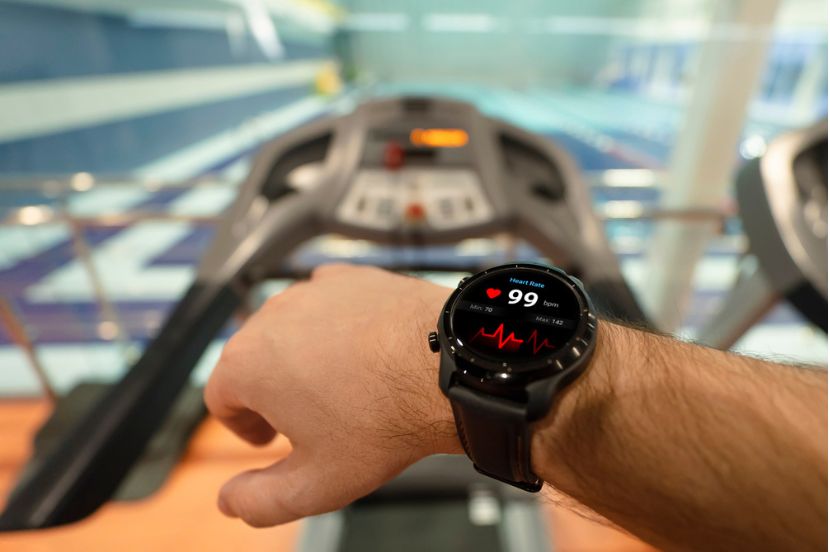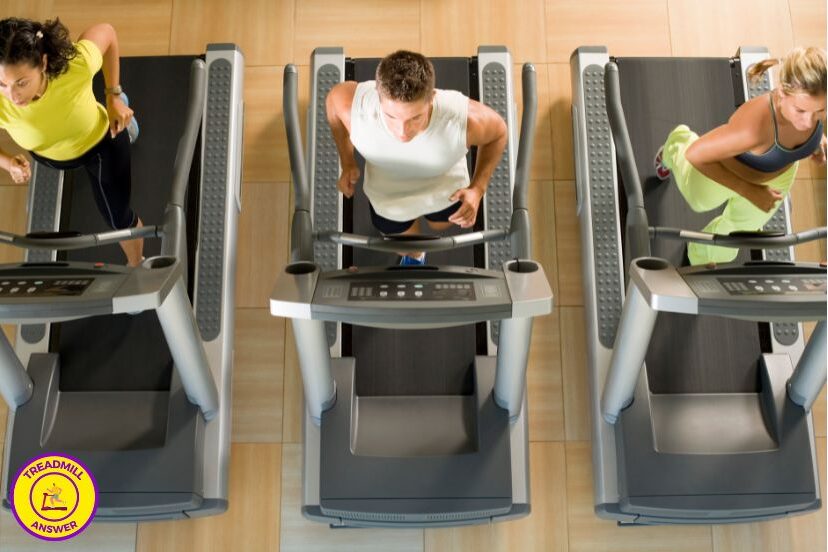Intervals Treadmill Workout: Your Fast Track to Fitness
Introduction: Intervals Treadmill Workout
Are you tired of monotonous, steady treadmill runs that leave you feeling unchallenged? If so, it’s time to switch things up with an intervals treadmill workout. This workout style is all about alternating between periods of higher and lower intensity, offering a flexible approach to improve your fitness, speed, and endurance. Whether you’re a beginner or looking to enhance your cardio routine, this guide will walk you through the ins and outs of interval training on the treadmill. Let’s dive into how you can make the most of your treadmill time and achieve your fitness goals!
What is an Intervals Treadmill Workout?
Understanding the Basics
An intervals treadmill workout is a type of exercise where you alternate between different intensities—such as jogging and walking or running and brisk walking—throughout your session. Unlike HIIT (High-Intensity Interval Training), which involves pushing your body to near maximum effort, interval workouts can vary in intensity and are designed to improve endurance, cardiovascular health, and overall fitness in a more controlled and sustainable way.
Why Choose Intervals Over Steady-State?
Steady-state cardio, where you maintain a consistent pace throughout your workout, can get the job done, but it often lacks the engagement and effectiveness of intervals. By switching between different speeds or inclines, interval workouts keep both your mind and body active, breaking the monotony and allowing you to tailor the session to your specific fitness needs—whether that’s improving stamina, boosting your speed, or just keeping things interesting.
Benefits of Intervals Treadmill Workouts

Burn More Calories Efficiently
One of the key benefits of an intervals treadmill workout is its ability to burn more calories in less time compared to a steady, moderate pace. By mixing high and low intensities, you keep your heart rate fluctuating, which can increase your calorie burn during and even after your workout.
Boost Cardiovascular Health
Interval training is a great way to challenge your cardiovascular system without overtaxing it. By gradually increasing the intensity during your workout and then backing off, you help your heart and lungs become more efficient over time, which is crucial for overall heart health.
Improve Speed and Endurance
If you’re aiming to run faster or go longer, interval training can help. By incorporating intervals into your treadmill routine, you can train your muscles to handle increased demands, gradually improving your speed and endurance. It’s like conditioning your body to shift gears smoothly when needed.
Break the Monotony of Cardio
Running at a steady pace can get boring fast. Intervals offer variety, keeping the workout engaging by changing speeds or inclines regularly. This not only helps the time pass more quickly but also keeps your motivation high.
Adaptable for All Fitness Levels
One of the best aspects of interval workouts is their adaptability. Whether you’re a beginner easing into fitness or an experienced runner looking to enhance performance, you can adjust the length and intensity of intervals to suit your current fitness level.
How to Get Started with Intervals Treadmill Workout

Equipment You Need
To get started with intervals on the treadmill, you’ll need the right gear.
Choosing the Right Treadmill
Select a treadmill that suits your workout style. Look for features like quick speed adjustments, a good incline range, and a comfortable belt size. If you’re doing moderate intervals, a basic treadmill might suffice, but for more dynamic sessions, opt for a model that supports easy transitions between speeds.
Small Treadmill for Home Use
Don’t have a lot of space? A small treadmill for home can be just as effective. Compact treadmills are designed to save space without sacrificing functionality. Look for models with foldable options, sturdy builds, and a decent speed range that accommodates your interval training needs.
Shoes You Need for the Treadmill
The right shoes are essential for a comfortable and safe treadmill workout. Opt for running shoes that provide ample cushioning, support, and stability. Look for shoes with good shock absorption to reduce the impact on your joints, and ensure they have a snug fit to prevent slipping. Brands like Brooks, Asics, and New Balance offer great options tailored for running and walking on treadmills.
Setting Up Your Treadmill for Success
Position your treadmill in a space that’s safe, well-ventilated, and free from distractions. Ensure the treadmill is level and stable, and always wear suitable shoes to avoid injuries. Keep water handy, and have a towel nearby for sweat. Adjust the treadmill’s settings to fit your comfort and workout plan—whether that’s starting with a light walk or diving right into your intervals.
Sample Intervals Treadmill Workouts

Beginner-Friendly Intervals Workout
If you’re new to interval training, start simple.
- Begin with a 5-minute warm-up at a comfortable walking pace.
- Then, alternate between 1 minute of brisk walking and 1 minute of slower walking for 15-20 minutes.
This approach helps your body adjust to the changes in intensity without overwhelming you.
Intermediate Intervals Treadmill Workout
For those with some experience, try this:
- Start with a 5-minute warm-up.
- Alternate between 2 minutes of jogging and 1 minute of walking for 20-25 minutes.
This slightly higher intensity will push your fitness level while still allowing enough recovery to keep you going.
Advanced Intervals Treadmill Workout
Ready for a challenge?
Warm up for 5-10 minutes.
Then alternate between 3 minutes of running at a challenging pace and 1 minute of walking. Repeat this for 25-30 minutes.
This workout focuses on building endurance and speed without the extreme intensity of HIIT.
Key Tips for Effective Intervals Treadmill Workouts

Listen to Your Body
One of the biggest advantages of intervals is their flexibility, so listen to your body. If a certain speed or incline feels too intense, it’s okay to scale it back. The goal is to push yourself but not to the point of discomfort or injury.
Keep an Eye on Your Heart Rate
Monitoring your heart rate can help you stay in the right intensity zone. During high-intensity intervals, aim for about 70-85% of your maximum heart rate, and allow it to drop back down during your recovery periods. This balanced approach keeps your workout effective and manageable.
Heart Rate Zones Explained
Understanding your heart rate zones can optimize your intervals. The moderate zone (50-70% of your maximum heart rate) is great for longer, endurance-building intervals, while the higher zone (70-85%) pushes your speed and stamina. Tracking your heart rate ensures you’re working within your limits and helps you adjust as needed.
Warm-Up and Cool Down Properly
Never skip your warm-up and cool down. A 5-10 minute warm-up gradually raises your heart rate and prepares your muscles, reducing the risk of injury. Cooling down after intervals helps bring your heart rate down and prevents dizziness or cramps.
Common Mistakes to Avoid

Skipping Warm-Ups
Diving straight into your workout without a proper warm-up can lead to muscle strains and other injuries. Always start with a light warm-up to prepare your body for the upcoming exertion.
Overdoing the Intervals
Intervals are meant to be challenging but not exhausting. Overdoing it can lead to burnout or injury. Stick to a moderate frequency—about 2-3 times a week—and ensure you’re giving your body enough recovery time between sessions.
Ignoring Form and Posture
Maintaining good form is crucial. Avoid leaning forward too much or holding onto the treadmill handles, as this can cause strain on your back and joints. Keep your posture upright, engage your core, and focus on your breathing to maximize your workout’s effectiveness.
Tracking Your Progress

Using Apps and Wearables
Apps and wearables can be your best friends when tracking progress. Use devices like Fitbit or Apple Watch to monitor your heart rate, track your intervals, and log your workouts. Apps can also suggest interval variations and help you adjust your routines as you improve.
Adjusting Your Routine
As you get stronger, adjust your intervals by increasing the duration of the high-intensity phases or shortening your rest periods. The key is to keep challenging yourself incrementally to avoid plateaus and continue making progress.
Conclusion: Embrace the Journey
Intervals treadmill workouts offer a balanced, flexible approach to cardio that can be tailored to suit any fitness level. They provide an effective way to burn calories, improve endurance, and keep your workouts interesting. By listening to your body, gradually increasing intensity, and staying consistent, you’ll enjoy the benefits of interval training while avoiding burnout. So, lace up those shoes, set up your treadmill, and start your interval journey today—your fitness goals are within reach!
FAQs

What is the Best Interval Time for Beginners?
For beginners, start with short intervals that are manageable. A great starting point is 1 minute of brisk walking followed by 1 minute of slower walking. This balanced approach allows your body to adapt to the rhythm of interval training without overwhelming you.
How Often Should I Do Intervals Treadmill Workouts?
Aim for 2-3 interval sessions per week. This frequency provides enough challenge without overloading your system. Be sure to have rest days or lighter activity days between your interval sessions to allow for recovery and adaptation.
Can I Lose Weight with Intervals Treadmill Workouts?
Yes, intervals treadmill workouts can be an effective way to lose weight. The varying intensities help boost your metabolism and burn more calories than steady-state cardio alone. By keeping your heart rate elevated and engaging different muscle groups, interval training helps you burn fat more efficiently. Plus, the afterburn effect (where your body continues to burn calories even after the workout) is more pronounced with interval workouts, making it a powerful tool in your weight loss journey. Pairing these workouts with a balanced diet and regular strength training will further enhance your results.
How Long Should Each Interval Be?
The length of each interval depends on your fitness level and goals. For beginners, shorter intervals (like 1 minute of activity followed by 1 minute of rest) are ideal to build endurance. Intermediate users might try 2-3 minutes of moderate intensity followed by 1-2 minutes of low intensity. Advanced users can extend the high-intensity intervals to 3-5 minutes with shorter rest periods. The key is to start where you’re comfortable and gradually increase the duration of your high-intensity intervals as your fitness improves.
Do I Need to Change the Incline During Intervals?
Changing the incline during your intervals can add an extra challenge and engage more muscle groups, particularly your glutes, hamstrings, and calves. Incline intervals simulate hill running, which can improve your running form and build leg strength. Start by adding a slight incline (1-2%) during the high-intensity phases, and as you get stronger, you can increase it to 4-6%. Just be mindful of your form—avoid leaning forward excessively, and keep your core engaged to protect your back. You can read our article: Incline treadmills: Ultimate Guide
What Should My Heart Rate Be During an Intervals Workout?
During the high-intensity phase of your interval workout, aim for 70-85% of your maximum heart rate. This zone is effective for improving cardiovascular fitness and burning calories. During the low-intensity or recovery phases, your heart rate should drop to 50-65% of your maximum. Using a heart rate monitor can help you stay within these zones, ensuring you’re working hard enough during high-intensity periods and recovering adequately in between.
Can I Do Interval Treadmill Workout Every Day?
While interval training is beneficial, it’s not recommended to do it every day. Your muscles need time to recover between high-intensity sessions to avoid overtraining and reduce the risk of injury. Instead, limit interval workouts to 2-3 times per week and fill the other days with low-intensity cardio, strength training, or active recovery activities like yoga or stretching. This balanced approach helps you stay on track without burning out.
Incorporating intervals into your treadmill routine can transform your cardio workouts, making them more engaging, effective, and tailored to your fitness goals. With the right setup, mindset, and consistency, you’ll find yourself reaching new levels of endurance, speed, and overall health. So, take the leap into interval training and enjoy the journey towards a fitter, stronger you!




